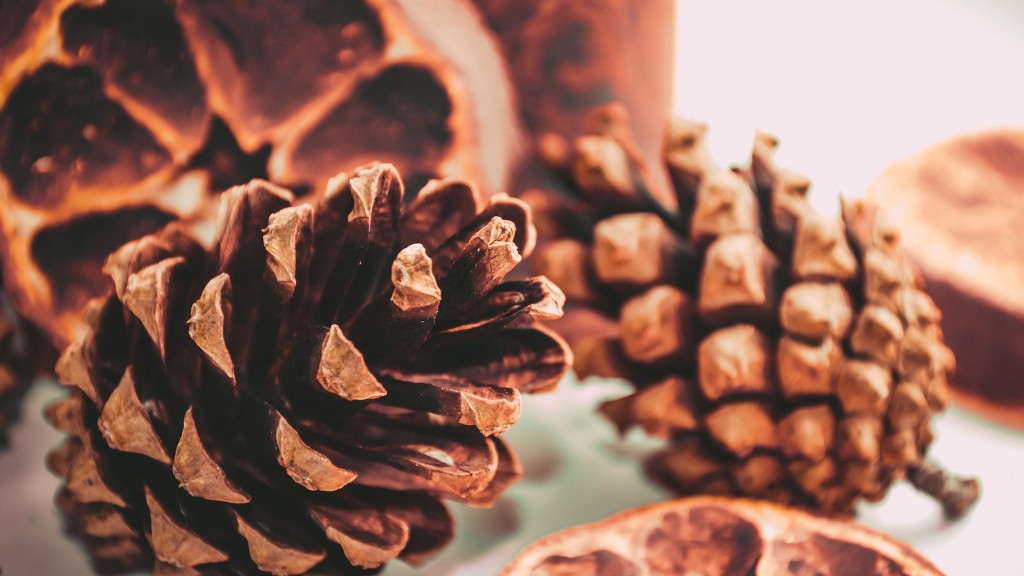When trimming an apple tree, it is important to correctly identify what pruning is needed and when to do it. Pruning should always be done in the winter months, as this is when the tree is dormant. Apple trees should be pruned on a regular basis to promote growth and health. The type of pruning needed depends on the age and health of the tree, as well as the desired shape or fruit production. Young trees and newly transplanted trees should be pruned lightly in early winter, to encourage strong growth and to remove any dead or weak branches. Established apple trees should be pruned in late winter or early spring, depending on the desired fruit production and the shape of the tree. Trees that are producing fruit should be pruned more lightly than those that are not.
When pruning, it is important to look for broken branches, dead or dying branches, damaged limbs, and any branches that are growing in an undesirable direction. Pruning should be done using clean, sharp shears, and any large branches should be cut back to a bud or a Y-shaped junction. Avoid removing more than 1/3 of the tree’s branches in one season, to ensure the health of the tree. All pruning cuts should be made at slightly above a bud or a Y-shaped junction so that the tree can heal quickly.
It is also important to check for suckers, or vigorous secondary branches, that grow from the base, along the trunk and from rootstock. These should all be removed, as they restrict the development of the tree’s canopy. If the tree has multiple trunks, one can be removed to better shape the tree, or spur pruning can be done to increase flower bud formation and fruit production.
Once the pruning is done, do not forget to mulch! Mulching with organic material such as leaves, grass clippings, or even wood chips helps keep the soil healthy and also minimizes weeds. Finally, keeping the tree watered is important to promote healthy growth and a vibrant canopy.
Pruning Young Trees
When pruning young apple trees,it should be done lightly in the early winter to help them establish a strong growth habit and get rid of any dead or weak branches. Pruning can help young trees develop a strong structure and correct any problems that arise from transplanting such as incorrect root orientation or excessive sucker growth. Pruning should be done before the buds swell and remove no more than 1/3 of the live branches. It should be done with clean, sharp shears to maintain the shape and consistency of the canopy.
Pruning newly planted or very young trees should focus on removing any dead or damaged branches, as well as any branches that are growing in an unwanted direction. It should also be done with an eye towards the shape of the tree and the desired size of the canopy. Vigorous secondary branches, or suckers, should also be removed to help the tree focus its energy on developing its main canopy.
Any pruning cuts should be made at a slightly above a bud or a Y-shaped junction, to ensure proper healing. Once pruning is complete, remember to mulch with organic material and keep the tree watered. These actions will help the tree become firmly established and encourage proper growth and development.
Established Tree Pruning
Pruning more established apple trees is slightly different than pruning young trees. Established trees should be pruned in the late winter or early spring, depending on the desired fruit production or desired shape of the tree. Pruning established trees should be done with clean, sharp shears as with all other pruning, but it should be done more lightly, as these trees have a much thicker foliage and a wider canopy.
When pruning established apple trees, it is important to look for broken branches, dead or dying branches, damaged limbs, and any branches that are growing in unwanted directions. All of these should be pruned back to a bud or a Y-shaped junction with clean shears. As these trees have a much denser canopy and a full root system, you do not want to prune too heavily, or it can harm the tree’s health. Do not be afraid to prune limbs and secondary shoots, but avoid removing too much of the foliage in one season. Doing so can weaken or kill the tree.
Once the pruning is complete, remember to mulch with organic material and water the tree to promote healthy growth and a vibrant canopy. Established apple trees can be pruned yearly to maintain shape and good health. Doing so will ensure that the tree produces lots of beautiful apples and provides you with a healthy tree that will last for years.
Spur Pruning
Spur pruning is a technique used to prune apple trees to promote flower bud formation and increase the tree’s fruit production. This method of pruning should be used sparingly, and only when specifically needed. Spur pruning is used to shape the canopy and encourage growth in desired areas, such as at the crown of the tree or along the trunk. To spur-prune an apple tree, prune back branches to the desired length, making sure to cut just above a bud or a Y-shaped junction.
When spur-pruning an apple tree, it is important to select branches that are 2 or 3 years old, as these are the most productive. It is also important to make sure that the tree is not pruned too heavily in one season. Pruning sparsely every season can help maintain the shape and encourage flower bud formation, resulting in a much better yield of apples. Spur pruning can also help with removing any dead or damaged branches.
As with all types of pruning, once it is complete, remember to mulch with organic material and water the tree regularly. Doing so will promote healthy growth and give the tree the best chance of producing a good yield of apples.
Removing a Trunk
If an apple tree has multiple trunks, it may be desirable to remove one of them to improve the tree’s shape and increase fruit production. This process is called trunk removal and should be done in late winter or early spring. To remove a trunk, it is important to properly identify which trunk is hindering growth and remove it at ground level.
When removing a trunk, it is important that the tools are clean and sharp, to ensure a clean cut and avoid damaging the remaining trunks. Once the trunk is cut, the base should be sealed with a wax or resin-based sealant to protect it from disease and to encourage healing. Removing a trunk in this way can drastically improve the shape and health of the tree, resulting in larger, more productive fruit yields.
When removing a trunk, it is important to remember to mulch with organic material and keep the tree watered. Doing so will help the tree heal quickly and give it the best chance of producing a good yield of apples. It is also a good idea to prune the remaining trunks and suckers, to maintain the desired shape of the tree.



